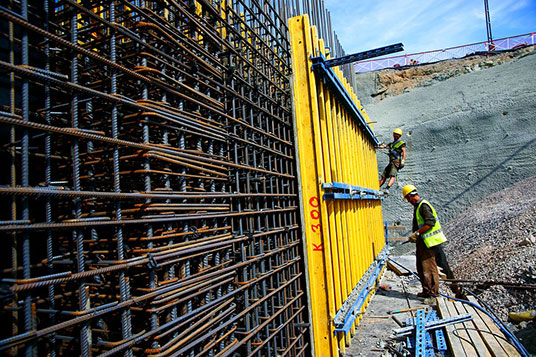The construction sector is no stranger to a challenge, but as Mark Farmer – author of last year’s “Modernise or Die” report – identified – “we are now facing a set of problems that we haven’t seen before”.
However, is there a solution? Are the problems out of our control as individuals? Or is there a turning point ahead? As Novo,
a UK leader in recruitment for the construction sector explains, the problem and solution lies in attracting, recruiting and retaining the best staff.
Factors out of our control?
Many of the problems in the industry are outwardly obvious. Economic uncertainty in light of Brexit, discontent in poor quality building and poor productivity, are all having a negative effect before the problems can even start to be addressed.
One area that people may not be as aware of is the problem of an ageing workforce. The Building Services in particular is where we are in severe danger of losing a generation of knowledge with a distinct lack of talent to take up the mantle. The simple fact is that the construction industry as a whole is failing to attract the requisite amount of people to the industry. In the case of Building Services, from what we see in the market, the problem is even more alarming.
Develop passion from an early age
This of course stems from school years. Students still perceive construction as workers on a site laying bricks, digging foundations and sitting in hot vehicles. They don’t see the rich tapestry of careers the construction sector offers, on and off the site. From designing iconic buildings, buying materials for projects, managing logistics, health and safety, electrical installations – the list goes on and on. Like any other industry, construction needs to be shouting about variety.
This lack interest or education at an early stage, has led to the building services community, in particular, being heavily weighted towards the older end of the spectrum with a huge void left in the middle and at the bottom. Instead, we are finding candidates in their late 20s and 30s step up into management roles but without the benefit of the vast bank of knowledge from their older peers.
Yes, there are some extremely talented younger individuals working in the sector but in a market that has increased by 25% in the last 5 years, there simply isn’t enough at present to carry through a smooth succession plan for the continuity of the industry. Indeed, Building Services could take a leaf out of the Mechanical and Electrical systems industry which has seen increased growth after past struggles.

What can the industry do?
So, what is being done? Apprenticeships obviously offer a gateway to the industry but uptake for Building Services apprenticeships remain dangerously low. While work is being done to attract students to careers in STEM, the fields of science, technology, engineering and mathematics are so broad that funnelling potential candidates through specifically to the building services sector is not straightforward. Again, the solution may lie in making the sector a lot more attractive to the younger generation, so they actively seek out opportunities.
It may be that M&E Contractors themselves need to invest more time in making the sector more appealing to the younger generations– “sexing it up” for want of a better phrase. After all, working as part of a great team on iconic buildings that shape skylines across the world is an exciting occupation to be involved with, it just needs to be promoted more.
The state of the industry
It certainly makes for an interesting sector in which to recruit. Skills shortages may lead to a competitive but ultimately unsustainable bubble where large premiums are paid for senior staff and businesses squabble for the best of the limited young talent pool.
While the future of the building services sector will certainly be interesting to follow, the unsustainable question must be addressed. If it isn’t, we may find our landscapes and skylines will be dramatically changing as the generations go on.


